The Everest Base Camp Service Trek offers adventurous trekkers the chance to enjoy the stunning Khumbu region of Nepal. This 14-day journey takes participants on a captivating trek through charming Sherpa villages, culminating in the breathtaking views of Everest Base Camp at 17,594 feet. With an experienced guide and local porters by their side, trekkers can look forward to comfortable teahouse accommodations and authentic Nepali cuisine, ensuring a truly memorable cultural experience. But what lies beyond the iconic base camp, where few have ventured?
Key Points
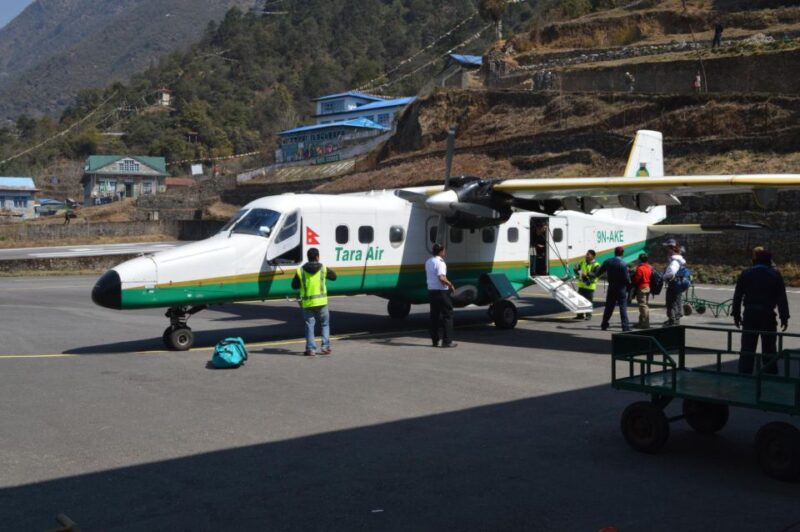
-
The Everest Base Camp Service Trek is a 14-day journey through the Khumbu region, offering stunning views of Everest, Nuptse, Lhotse, and other Himalayan peaks.
-
The trek includes cultural experiences, such as visiting Sherpa settlements, monasteries, stupas, and Chortens along the trail, providing a glimpse into the local way of life.
-
Trekkers will be accommodated in comfortable teahouse lodgings and provided with nutritious meals designed to fuel the strenuous hikes.
-
The trekking team consists of experienced, English-speaking guides and porters who prioritize the safety and well-being of the participants throughout the journey.
-
The trek requires essential permits, proper packing and gear, and attention to safety considerations, such as acclimatization and hydration, to ensure a memorable and successful experience.
Trek Highlights
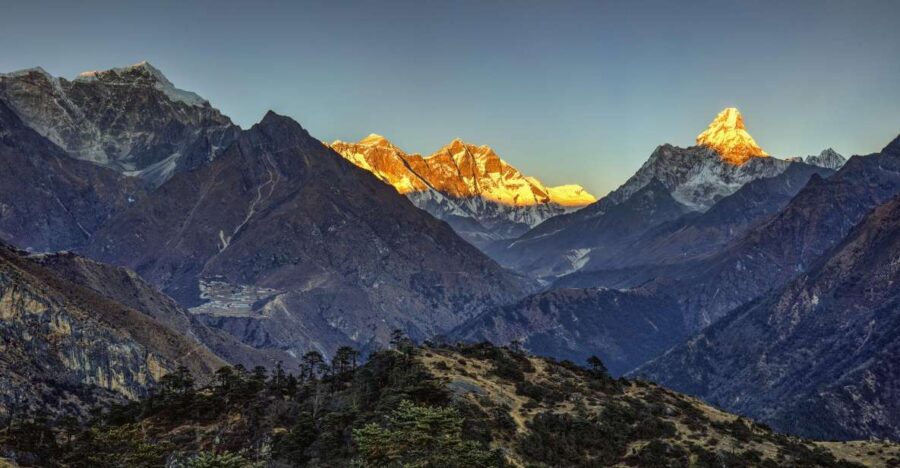
The Everest Base Camp Trek offers trekkers the chance to experience the stunning Himalayan scenery and enjoy the vibrant Sherpa culture.
This 14-day trek through the Khumbu region features key highlights like the Khumbu Glacier, the hike to Kala Patthar (5,644 meters), and breathtaking views of Mount Everest, Nuptse, Lhotse, Pumori, and Ama Dablam.
Trekkers will journey through Sherpa settlements like Phakding, Namche, Tengboche, Dingboche, and Gorakshep, marveling at the monasteries, stupas, and Chortens along the way.
With its moderate to challenging difficulty, the Everest Base Camp Trek offers an unforgettable adventure for those seeking to connect with the Himalayas and its people.
Ready to hit more trails? More hiking adventures we feature in Pheriche
Itinerary Overview
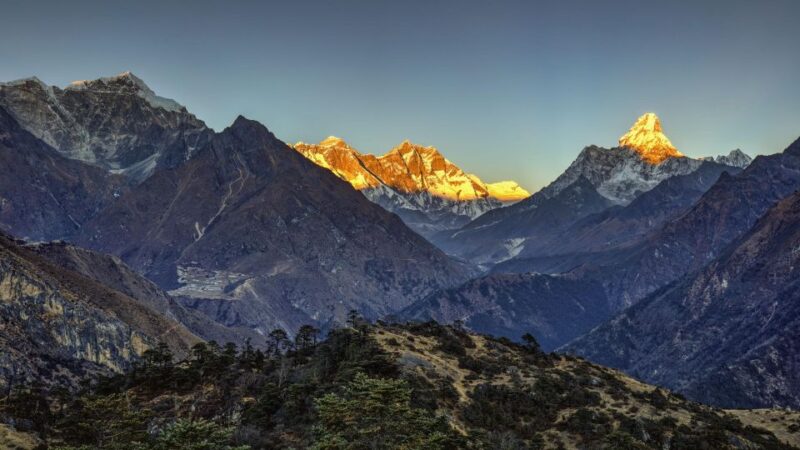
Typically, the Everest Base Camp Trek itinerary spans 14 days, beginning with arrival in Kathmandu and culminating in the final departure.
From Kathmandu, you’ll fly to the town of Lukla, located at an elevation of 9,316 feet.
The trek then continues through Sherpa settlements like Phakding, Namche Bazar, Tengboche, Dingboche, and Lobuche, before reaching Gorak Shep and the Everest Base Camp at 17,594 feet.
Along the way, you’ll have the chance to hike to Kala Patthar, which offers stunning panoramic views of Mount Everest and the surrounding peaks.
The trek also allows for acclimatization days to ensure a safe and enjoyable experience.
Accommodation and Meals
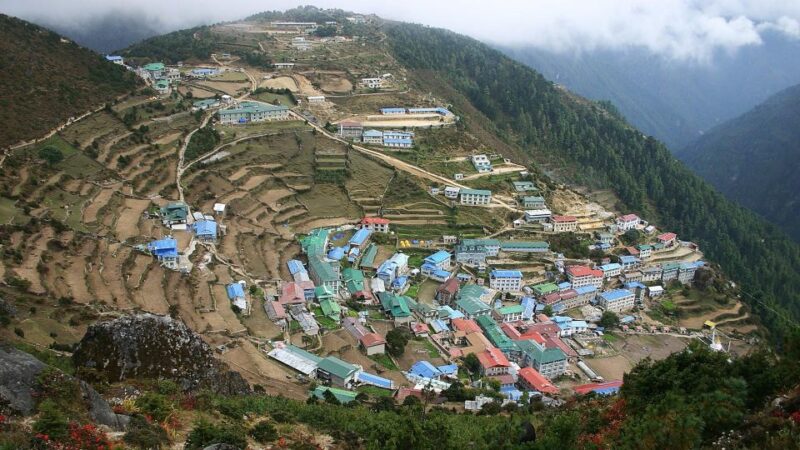
During the Everest Base Camp trek, trekkers can expect comfortable teahouse accommodations and hearty Nepali-style meals.
Teahouses along the trail provide basic but clean rooms, with shared bathroom facilities. Meals, often including local staples like daal bhat (rice and lentils), momos (dumplings), and vegetable curries, are included in the trek package and served at the teahouses.
The food is wholesome and filling, designed to provide the necessary energy for the strenuous hikes. Vegetarians and those with dietary restrictions can be accommodated with advance notice.
Trekking Team
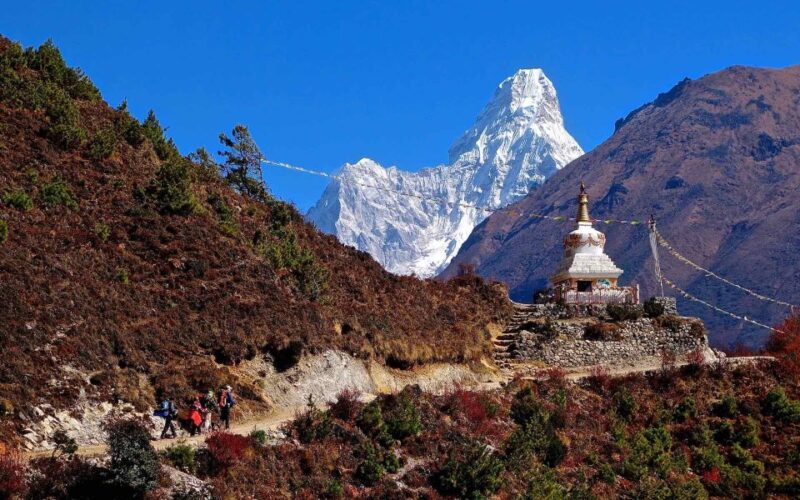
What makes up the trekking team on the Everest Base Camp trek?
The team usually consists of an experienced, English-speaking guide who leads the group, along with one porter per two trekkers to carry their bags.
The guides are highly knowledgeable about the local culture, flora, and fauna, and they ensure the safety and well-being of the trekkers throughout the journey.
The porters, who are often local Sherpas, are essential in transporting the necessary gear and supplies, allowing the trekkers to focus on the trek itself.
Together, the guide and porters work seamlessly to create a memorable and enjoyable experience for the participants, ensuring they can fully enjoy the stunning Himalayan scenery.
More Great Tours NearbyPermits and Paperwork
To embark on the Everest Base Camp trek, trekkers must obtain several essential permits and paperwork.
The Trekking Information Management System (TIMS) card is required, which serves as a permit and registration system for trekkers.
Plus, permits to enter the Sagarmatha National Park, where the Everest Base Camp is located, must be secured prior to the trek. These park permits ensure the protection of the fragile Himalayan ecosystem and regulate the number of visitors.
The trek organizer will typically handle the acquisition of these permits, but trekkers should confirm the details and ensure they’ve the necessary documentation before departing.
Proper preparation with the right permits and paperwork is key to a successful and responsible Everest Base Camp adventure.
Packing and Gear
Proper packing and selection of essential gear are crucial for a successful and comfortable Everest Base Camp trek, as trekkers must be prepared for the challenging high-altitude environment and unpredictable weather conditions. Layering is key, with moisture-wicking base layers, insulating mid-layers, and weatherproof outer shells. Durable hiking boots, trekking poles, and a comfortable backpack are musts. Don’t forget sun protection, headlamps, and first-aid essentials. To help guide your packing, consider this handy gear checklist:
| Item | Recommended | Optional |
|---|---|---|
| Backpack | 40-60 liters | N/A |
| Jacket | Down or synthetic | N/A |
| Gloves | Warm, waterproof | Liner gloves |
Safety Considerations
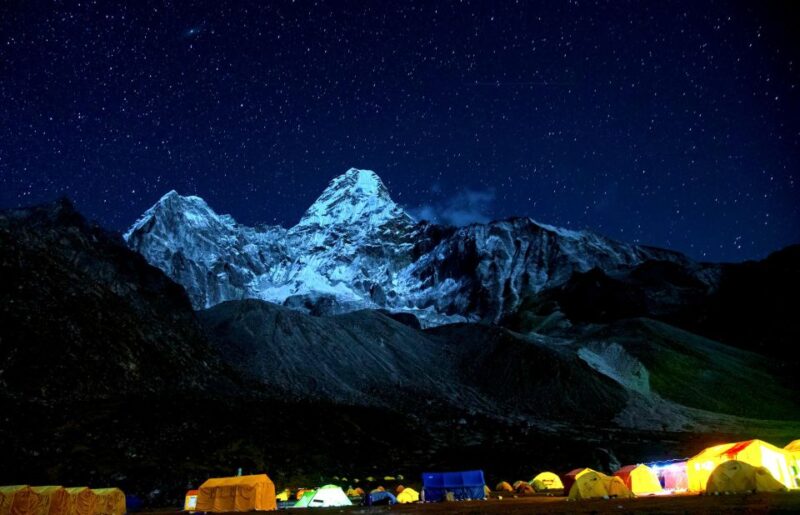
Trekking in the high-altitude Himalayas requires careful consideration of safety precautions to ensure a fulfilling and secure journey. Participants should be prepared for the challenges posed by the thin air, unpredictable weather, and rugged terrain.
Proper acclimatization, staying hydrated, and packing appropriate gear are essential. Guides are trained to monitor for altitude sickness and coordinate emergency evacuations if needed.
Travelers should disclose any pre-existing medical conditions and consult with their doctor. While the trek poses inherent risks, diligent preparation and following the guides’ instructions can help mitigate dangers.
This preparation allows trekkers to focus on the stunning natural beauty and culture that the Everest Base Camp trek offers.
Post-Trek Activities
After the grueling Everest Base Camp trek, trekkers can indulge in rejuvenating post-trek activities to soothe their weary bodies and savor the memories of their accomplishments.
Upon returning to Kathmandu, participants can treat themselves to a full-body massage, which is included in the tour package. This therapeutic experience helps alleviate muscle soreness and fatigue.
Trekkers can also explore Kathmandu’s vibrant markets, where they can browse for unique souvenirs and enjoy the bustling local culture.
Plus, the tour operators often organize farewell dinners, allowing participants to share their expedition stories and bond over the shared experience.
These post-trek activities provide a well-deserved respite and a chance to reflect on the remarkable journey to Everest Base Camp.
Frequently Asked Questions
Can I Bring My Pet on the Trek?
No, pets are not allowed on the trek. The high altitudes and challenging terrain make it unsafe and impractical to bring a pet. The trek is designed for human travelers, and does not accommodate the needs of animals.
Can I Extend My Trek to Reach Everest Summit?
Extending the trek to reach the Everest summit is not advisable for most trekkers. It requires specialized equipment, extensive mountaineering experience, and coordination with professional guides and outfitters. The Everest Base Camp trek itself is a significant achievement for many adventurers.
Is There a Weight Limit for the Porters?
Porters typically have a weight limit of around 15-20 kg per porter, though this may vary depending on the trek operator. It’s important to pack light and distribute weight evenly to ensure the porters can manage the trek safely.
Can I Purchase Altitude Sickness Medication Locally?
Yes, you can purchase altitude sickness medication locally in Kathmandu or along the trek route. Many trekking companies also provide these medications as part of their basic medical kit for trekkers. It’s recommended to consult your guide or a local pharmacist.
Are There Any COVID-19 Restrictions in Place for the Trek?
Due to the ongoing COVID-19 pandemic, there may be specific entry requirements or restrictions in place for trekking in Nepal. Travelers should check the latest guidelines and protocols with their tour operator or local authorities before embarking on the trek.
Recap
The Everest Base Camp Service Trek offers trekkers a once-in-a-lifetime opportunity to enjoy the breathtaking landscapes and vibrant Sherpa culture of the Khumbu region.
With experienced guides, comfortable accommodations, and delicious local cuisine, this adventure provides a truly unforgettable experience for those seeking to conquer the iconic Everest Base Camp at 17,594 feet.
A perfect blend of physical challenge and cultural discovery, this trek is a must-do for any adventurous spirit.
You can check availability for your dates here:More Hiking & Trekking Tours in Pheriche
More Tour Reviews in Pheriche
Not for you? Here's more things to do in Pheriche we have recnetly reviewed
- 2 Best Guided Tours In Pheriche
- 3 Best Tours In Pheriche
- 5 Best Helicopter Flights And Tours In Pheriche
- 17 Best Hiking And Trekking Tours In Pheriche
- Everest Base Camp Trek 14 Days
- From Lukla: 10 Day Everest Base Camp With Kalapatthar Trek
- Everest Base Camp With Kalapatthar Guided Trek 12 Days
- From Lukla: 10 Day Everest Base Camp With Kalapatthar Trek
- Kathmandu: 12-Day Everest Base Camp Trek
- From Kathmandu: 12DAY Everest Base Camp Trek
- From Lukla: 11 Day Everest Base Camp With Kala Patthar Trek
- Everest Base Camp Trek- 14 Days
